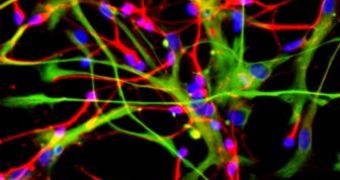There are two most commonly accepted theories on aging: either it is the result of damage storing up or a suicide program.
But a new theory, called astrocytic, is based on the changes observed in our brain and was formulated by Aleksei Boyko, Ukrainian researcher, specialist of the National Agrarian University of Ukraine.
The basis of his theory is represented by the changes observed in brain cells: the transformation of the radial neuroglia cells into stellate cells (astrocytes). As this cell transformation is genetically programmed, Boyko points out that aging and subsequent death have been programmed.
He made a comparison between animals of different aging rates, and observed that most reptile, fish and amphibian species that have a slower growth rhythm also present a very high regenerative ability of their brain tissue: they can quickly fix nervous system damage, replacing death nerve cells.
This ability is almost lost in evolved vertebrates: mammals and birds. They can generate new neurons only in certain brain areas, such as in the walls of the lateral ventricles of the hippocampus. Neuroblasts, the cells that form neurons, travel through the brain via radial neuroglia fibers, and when they reach the aimed place, they turn into fully functional neurons replacing the dead or ill ones.
But during the lifespan of the mammals, radial neuroglia cells gradually turn into astrocytes, which impedes neuroblasts to move to their targeted nuclei. This way, renovation of brain cells turns impossible, and brain areas gradually lose functionality. These age-related transformations undoubtedly induce shifts in other organ systems, resulting in vascular derangements, hormonal status change, brygmus, alopecia, intercellular collagen accumulation, typical signs of aging.
But the less evolved vertebrates, fish, amphibians and reptiles keep their radial neuroglia cells throughout their life cycle, delaying the process of aging. The astrocyte hypothesis could explain the aging mechanism linked to the emergence or not of radial neuroglia cells.

 14 DAY TRIAL //
14 DAY TRIAL //